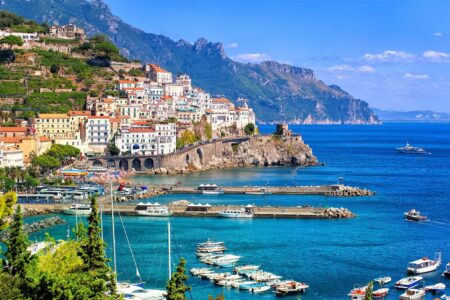As Spain grapples with a mounting housing crisis, previously overlooked ghost towns around Madrid are experiencing an unexpected resurgence. Once marked by abandoned buildings and dwindling populations, these settlements are now drawing renewed interest from residents and investors seeking affordable alternatives to the capital’s soaring real estate prices. This revival signals a potential shift in urban living patterns and highlights the evolving dynamics of Spain’s housing market.
Madrid’s Abandoned Communities Offer New Hope Amid Housing Shortage
Once silent and forgotten, several residential complexes on the outskirts of Madrid are witnessing a resurgence as local authorities and private investors collaborate to transform these abandoned communities into affordable housing hubs. Originally left incomplete during the 2008 financial crisis, these properties now present a unique opportunity to alleviate the mounting pressure on Madrid’s housing market, where rental prices have soared and waiting lists for government-subsidized homes continue to grow.
Efforts to revitalize these ghost towns focus on sustainable development and community integration. Initiatives include:
- Renovation of existing structures to meet modern energy efficiency standards
- Creation of green spaces and communal facilities to boost resident quality of life
- Partnerships with social housing programs to prioritize vulnerable populations
| Neighborhood | Units Refurbished | Projected Completion | Target Residents |
|---|---|---|---|
| Valdebebas | 300 | 2025 | Young Professionals |
| La Estrella | 150 | 2024 | Families |
| Rivas Vaciamadrid | 200 | 2026 | Senior Citizens |
Challenges in Revitalizing Ghost Towns Highlight Infrastructure and Social Integration Needs
Reviving abandoned settlements around Madrid presents a multifaceted challenge, where restoring basic infrastructure remains a top priority. Many ghost towns suffer from outdated or completely deteriorated utilities including water supply, electricity, and roads, which require comprehensive investment and modernization. Additionally, ensuring reliable internet connectivity is crucial to attract new residents, especially younger demographics who depend heavily on digital access for work and education. The logistical complexity of integrating these towns into the wider urban framework also demands careful planning; limited transportation options isolate communities and restrict economic opportunities.
Social integration poses an equally significant hurdle. Prospective inhabitants often hesitate due to the scarcity of essential services such as schools, healthcare facilities, and recreational spaces, which are indispensable for fostering a vibrant community. Local governments and developers face the delicate task of rebuilding not only physical spaces but also social cohesion. Key focus areas include:
- Community engagement: Encouraging participation from newcomers and remaining residents to cultivate a shared identity and support network.
- Economic incentives: Offering subsidies or tax breaks for startups and small businesses to stimulate local economies.
- Cultural preservation: Maintaining historical landmarks to retain unique town character while promoting tourism.
| Challenge | Impact | Potential Solution |
|---|---|---|
| Infrastructure Decay | Restricted access to basic services | Government-led renovation projects |
| Limited Social Services | Reduced quality of life | Develop community centers and clinics |
| Economic Isolation | High unemployment rates | Incentives for local businesses |
Experts Urge Government Incentives and Private Partnerships to Accelerate Urban Renewal Efforts
Economic analysts and urban planners emphasize the critical role of government incentives and synergistic private partnerships in transforming abandoned neighborhoods into vibrant communities. These collaborations have been pivotal in mobilizing resources, reducing bureaucratic hurdles, and encouraging sustainable development models that address both housing shortages and socio-economic disparities. Stakeholders advocate for increased tax breaks, streamlined zoning approvals, and co-investment frameworks that can entice developers to undertake large-scale renewal projects without compromising affordability.
One proposed strategy includes establishing dedicated urban renewal funds that leverage public money alongside private capital, with accountability measures to ensure equitable benefits. Experts highlight benefits such as:
- Faster rehabilitation of derelict properties
- Job creation in construction and local services
- Revitalization of local economies through new business opportunities
| Incentive Type | Description | Expected Impact |
|---|---|---|
| Tax Credits | Financial relief for developers investing in urban renewal | Higher project uptake |
| Fast-Track Permitting | Expedited approval processes | Reduced project delays |
| Public-Private Funds | Joint investment pools for redevelopment | Increased capital flow |
Final Thoughts
As Spain grapples with an escalating housing crisis, the revival of Madrid’s ghost towns offers a glimpse of hope amid mounting urban pressures. While challenges remain in ensuring affordable and sustainable development, these once-abandoned areas could play a pivotal role in addressing the country’s urgent need for housing. Moving forward, policymakers and developers alike will need to balance revitalization efforts with the demands of growing populations and infrastructure needs, as Spain seeks long-term solutions to its housing woes.




